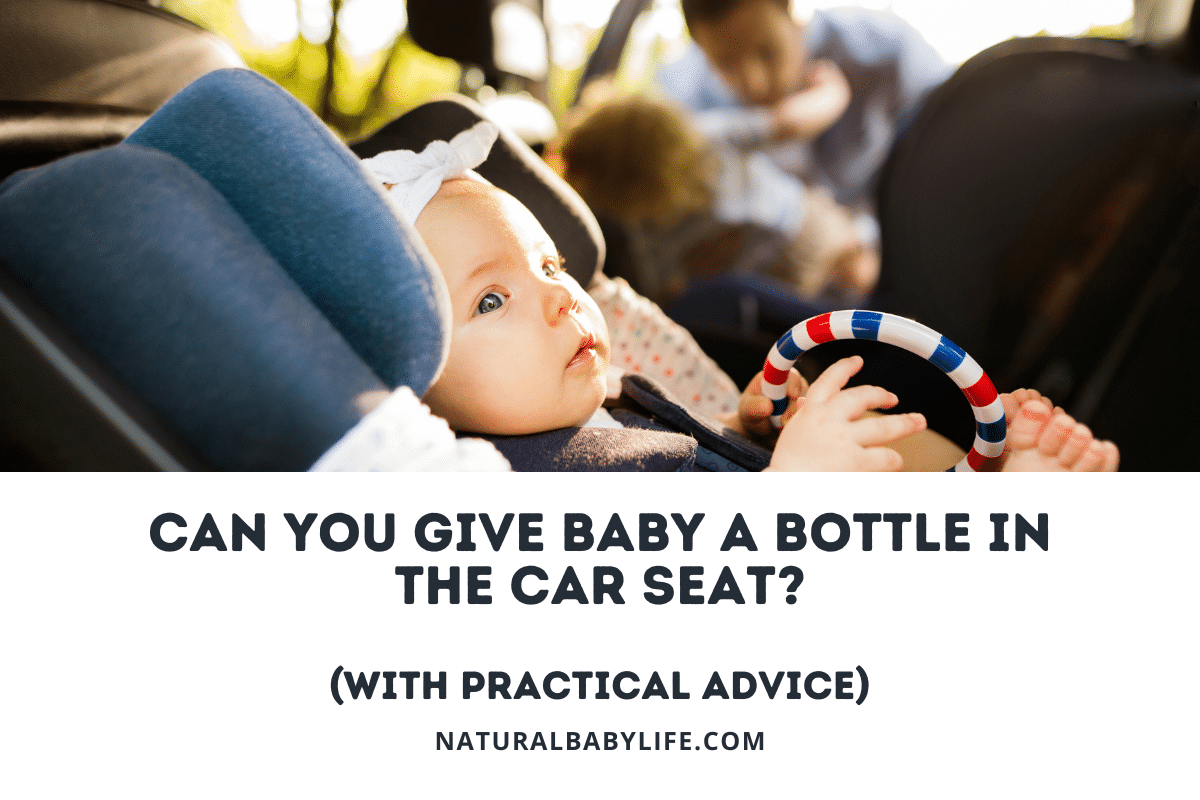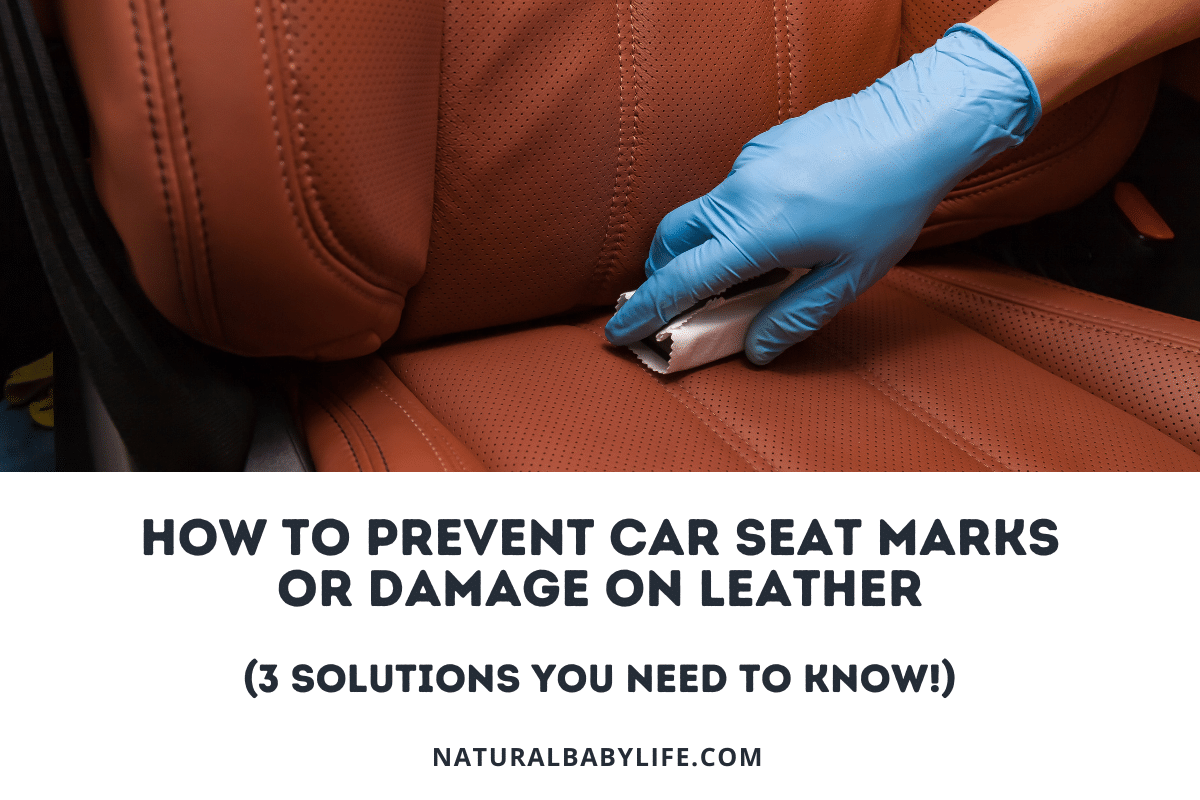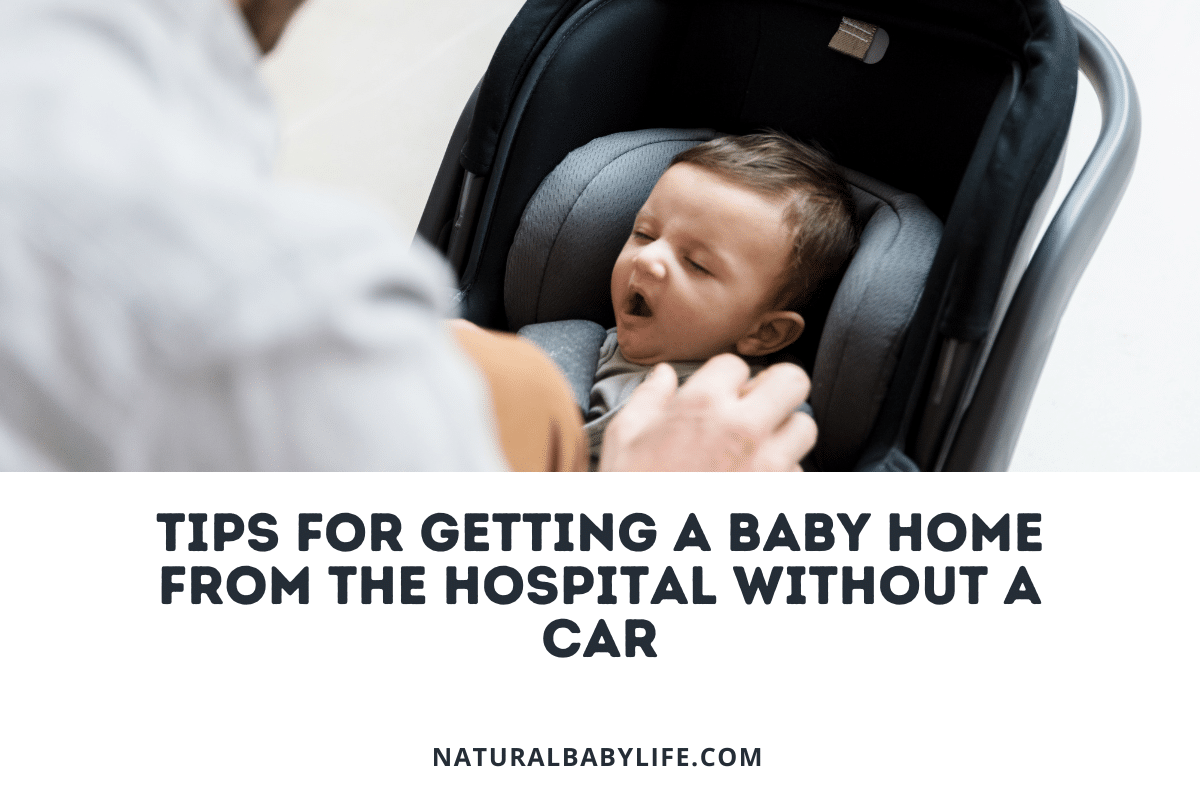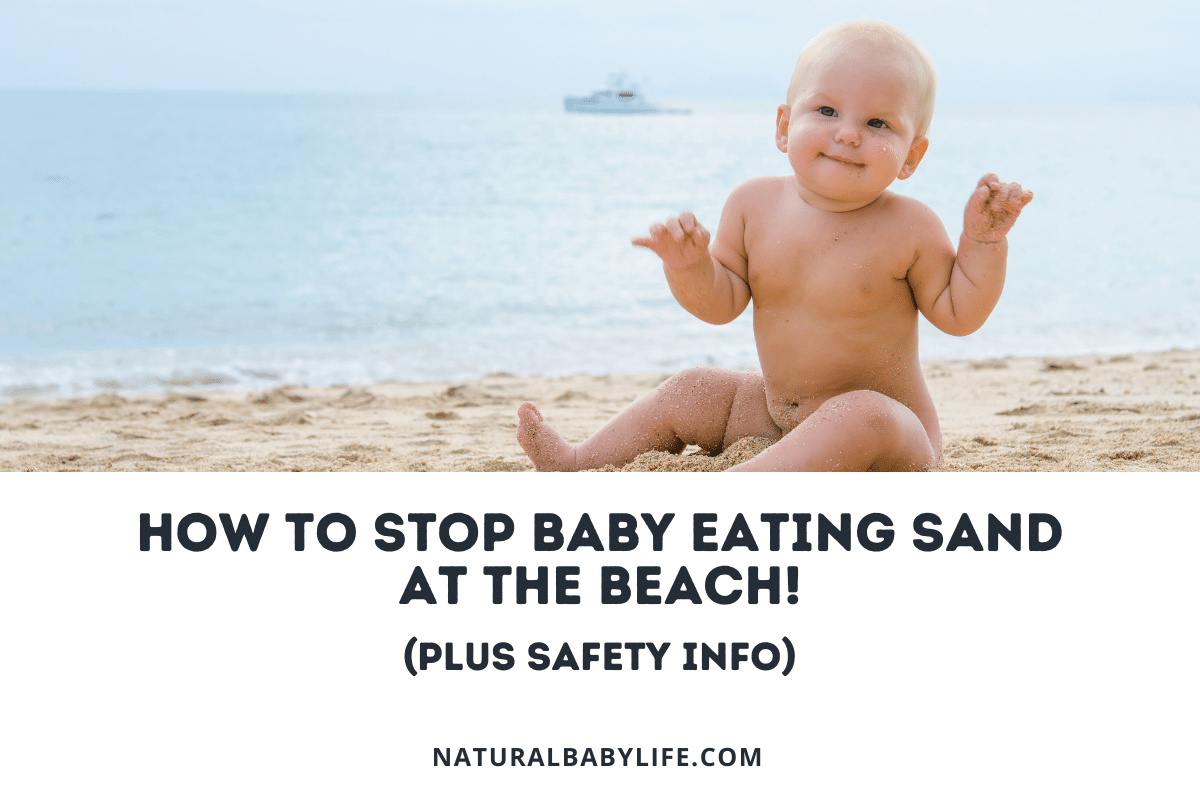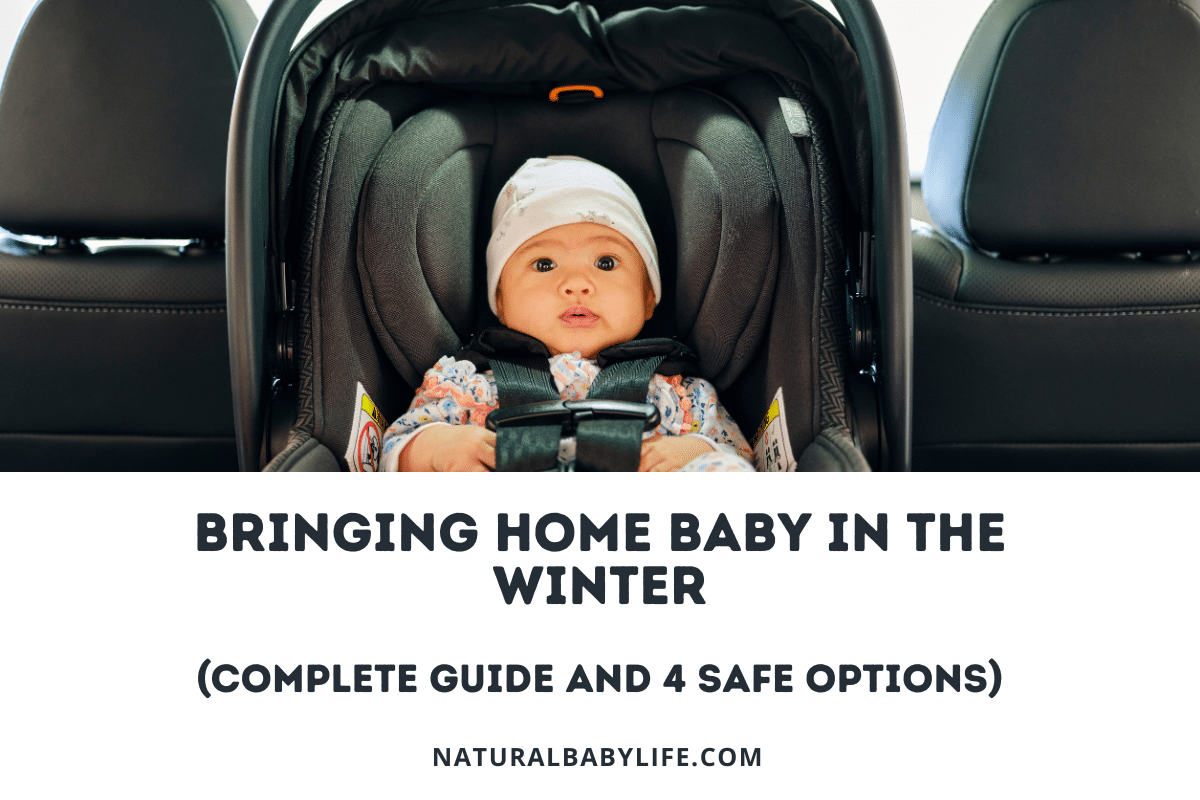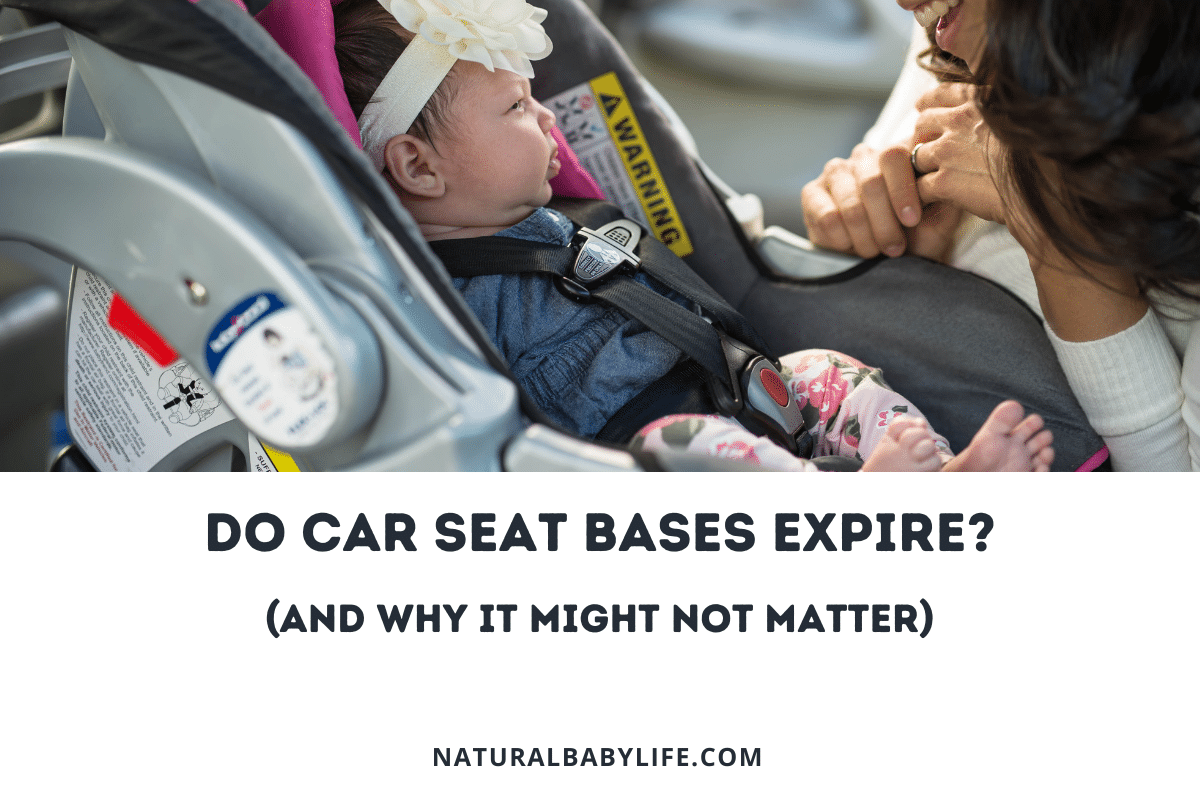If you’ve ever taken your baby on a trip, you know they tend to get hungry at inconvenient times. Since babies’ schedules are often unpredictable, it’s difficult to be in the car with little ones for a long time. To keep from constantly pulling over, you might wonder can you give baby a bottle in the car seat?
Giving baby a bottle in the car seat while the car is moving is not recommended. Bottles can become a choking hazard for infants or become a potential projectile in the event of a car crash. However, feeding your baby a bottle in the car seat is acceptable if the car is parked in a safe location and they are in an upright position.
If you do have to feed a baby or give them a bottle in the car, it’s possible to do so safely. Keep reading to hear our best tips and practical advice for feeding your baby on the go.
Table of Contents
Can you give baby a bottle in the car seat?
Every parent has experienced having a hungry baby in the back of the car at some point. When your baby is crying and you’re unable to stop to feed them, it can be frustrating for everyone. At this point, you might consider just giving your baby a bottle while they’re still in their car seat.
Feeding your baby a bottle in their car seat is possible but it’s not recommended, especially if the car is moving. If your baby does get hungry, the first thing you should do is figure out how long it will be before you can stop at a safe location.
If your baby can make it until you pull over, it’s best to wait. But this will depend on the age of your baby and how long it’s been since they’ve eaten. Newborn babies, for example, typically eat every two to four hours. So if it has already been two hours since their last bottle, you know they’ll need to eat soon.
When it comes to feeding your baby in the car seat, there are several safety and health concerns you should keep in mind.
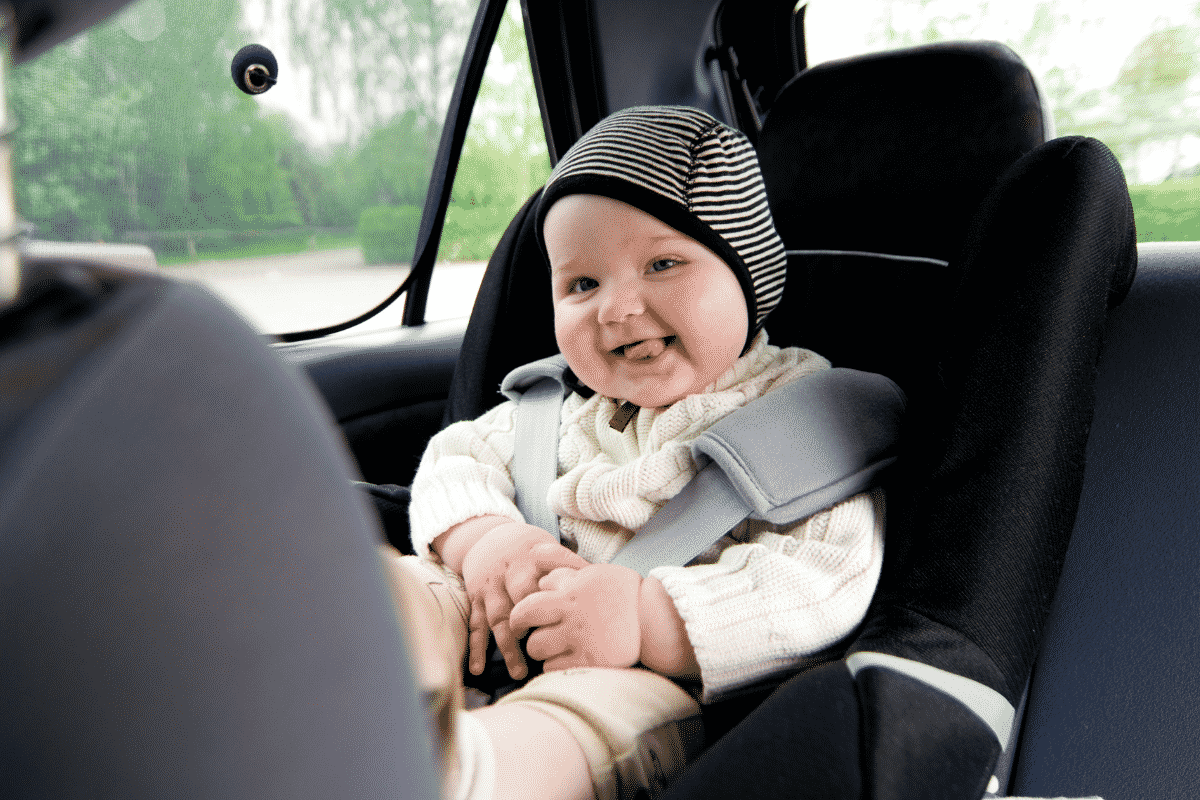
Milk or formula in a baby bottle could become a choking hazard
Infants and newborns should never drink a bottle in their car seat while the car is moving because they can’t hold the bottle or remove it if there’s too much milk in their mouth. This extra milk or formula could easily become a choking hazard that your baby will be helpless to prevent.
With this in mind, the best solution is to simply stop the car to feed your baby. If it’s a matter of saving time on the road, it’s not worth the potential risk.
A baby bottle could become a projectile in the event of a crash
Another major concern with feeding your baby in the car is the bottle could become a projectile in the event of a crash.
In fact, safety experts frequently remind drivers that any loose items inside a car can create devastating impacts for passengers or the driver in a normal car crash scenario. For instance, a 20-pound object would hit you with the force of 1,000 pounds of force when launched in a 55 mph crash.
Although a baby bottle is small, it would still be a safety hazard in a crash.
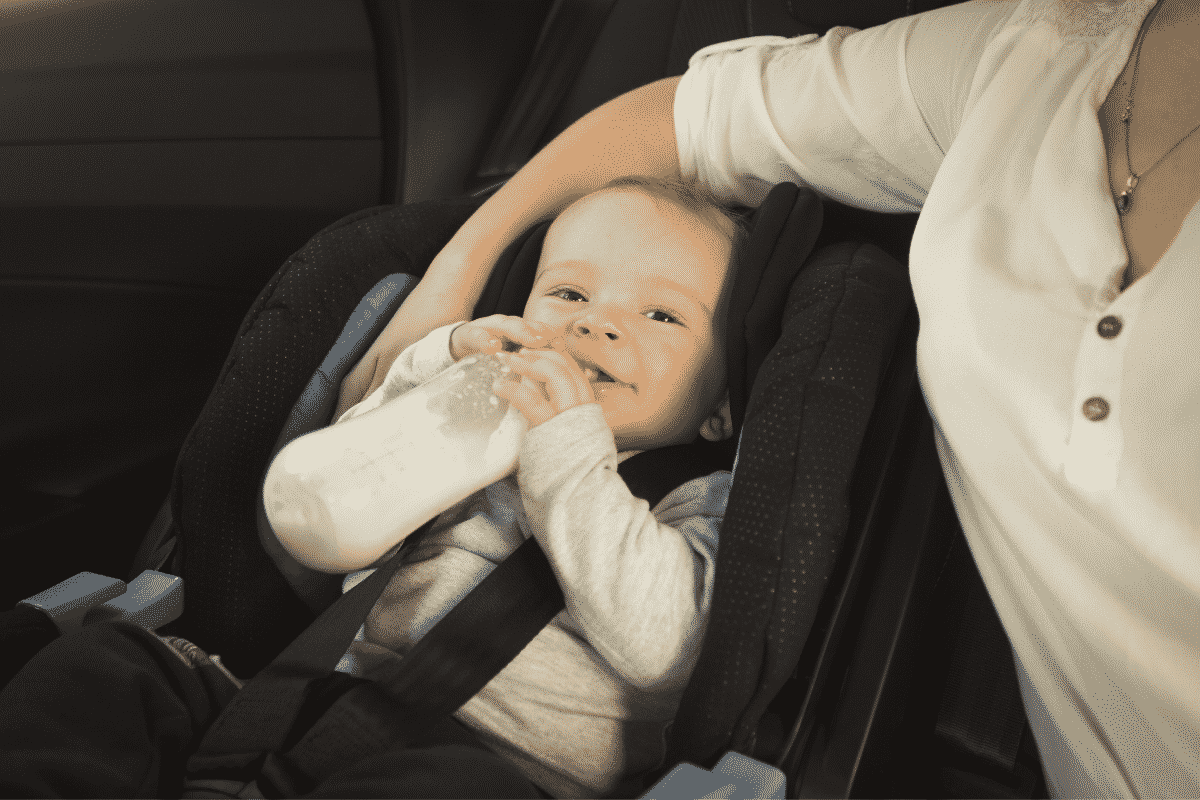
Babies eating while the car is moving will likely have issues with gas
Now that we’ve discussed the two major safety issues, it’s also important to know feeding your baby in a moving car can create painful gas for your baby.
Most babies are used to being fed in a calm, still environment. The vibrations of a moving car can allow extra air to enter your baby’s mouth. Since they aren’t used to this extra gas, you might end up with an upset and uncomfortable baby in the back of the car.
Taking a few minutes to stop the car will save you an hour of pain and suffering from an upset, crying baby!
It is more difficult to supervise a baby eating in a moving car
While there may be times when you’re able to sit in the back with your baby while someone else drives, there are also many times when you’re the only adult in the car and no one can provide supervision for your baby while your baby eats.
In nearly every case, a baby that depends on a bottle to be fed will not be old enough to hold the bottle up. If no one is able to supervise your baby while they’re feeding, you could run into a myriad of issues ranging from spills to safety hazards. In general, your baby should always be supervised when they’re drinking out of a bottle.
What to feed baby in a car seat
If you’re going to be in the car for a long time, it’s not always feasible to stop every few minutes because your baby or toddler is hungry. When your baby needs to eat in the car seat, the best items to feed them with are:
- Food pouches, such as applesauce
- Sippy cups, especially ones made of silicone
If your child is able to sit upright and is used to eating solid foods, they may snack on something such as cheerios or goldfish in the car. But feeding your child in the car will always carry a potential risk, so if they can wait until you stop, don’t feed them while the car is moving.
What not to feed baby in a car seat
No matter how old your baby is, you want to avoid feeding them anything in the car that could be a choking hazard. The snacks that most frequently become choking hazards are:
- Whole grapes
- Raw vegetables
- Hot dogs
- Nuts
- Popcorn
- Chips
- Candy (especially hard candy)
It’s important to note that any food could become a choking hazard, especially in the car, so keep this in mind when feeding your child in their car seat.
How to travel with a bottle-fed baby
Traveling with a baby comes with its own unique challenges. If your baby is bottle-fed, it’s not always realistic to stop and feed them, especially if they’re cluster feeding. But even if it’s inconvenient, pulling over to a safe location is always the safest way to go.
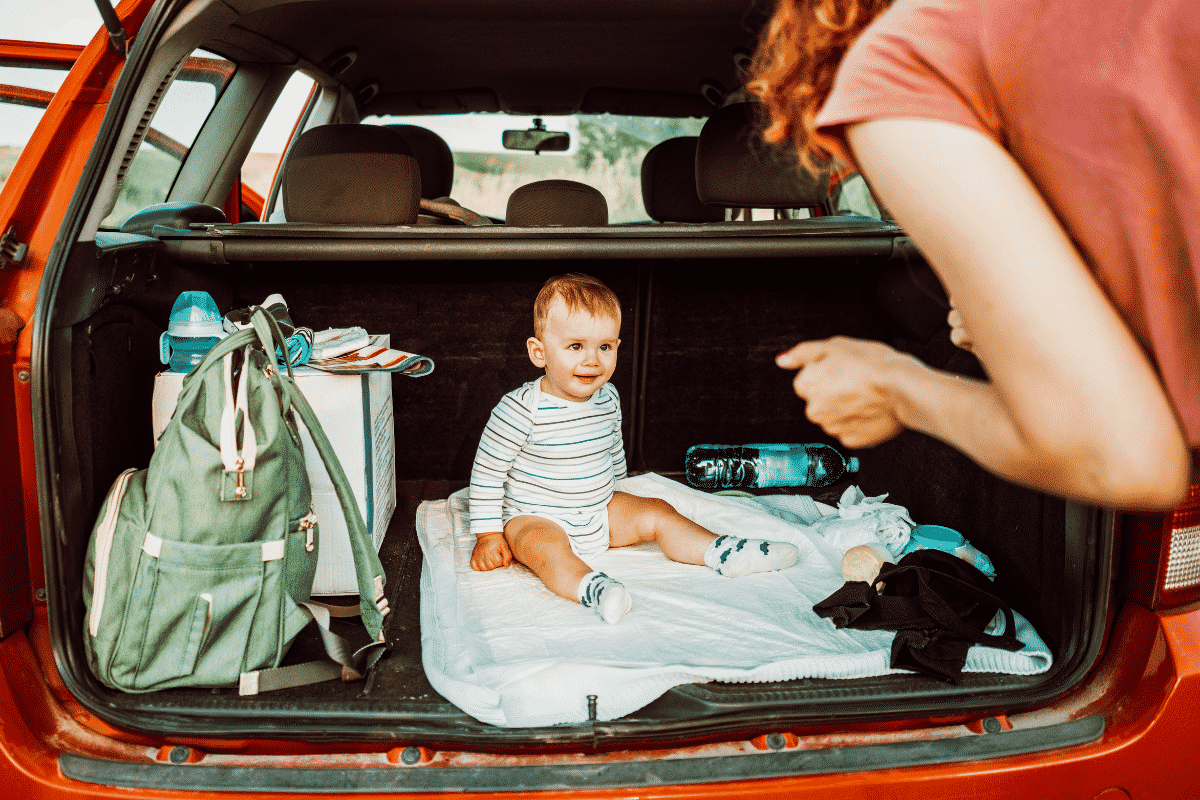
Here are some tips for traveling with a bottle-fed baby:
- Stop in a safe place. If at all possible, stop at a safe location before you feed your baby. Take them out of their seat and hold the bottle while you feed them. According to Baby Safe, most car seat manufacturers recommend that a baby shouldn’t be in a car seat for more than 2 hours in a 24 hour period. Especially if you’re on a long car ride, it’s best if you stop every once in a while to feed your baby and take them out of their seat.
- Don’t feed your baby while the car is moving. Anything your baby is holding or has near them can become a projectile in a crash. Even though we hope this never happens, it’s important to think about it from a safety standpoint. In the event of a crash, a bottle would become a projectile and could potentially harm your baby. It’s also a safety concern due to choking hazards as well as the risk of your child getting motion sickness or an upset stomach.
- Hold the bottle for your baby. If you do have to feed your baby in the car, don’t ever prop the bottle up and leave the baby unattended. According to the CDC, propping up a bottle for your baby increases their chances of choking, ear infections, and tooth decay. It’s also important for you to watch your baby’s cues to see when they’re done, especially if they’re not old enough to hold their own bottle.
- Make sure you have all the supplies you need. The last thing you want is to get on the road and realize you’ve forgotten something. There are plenty of handy supplies out there for traveling with a baby such as bottle tote bags and portable bottle warmers (here is my favorite!). If your baby is breastfed, be sure to bring a portable charger for your pump if needed (this one plugs into a car adapter!), as well as a cooler to store your breastmilk.
| Image | Title | Price | Prime | Buy |
|---|---|---|---|---|
 | 12 Volt Car Vehicle Lighter Adapter for Medela Pump | PrimeEligible | Buy Now | |
 | Munchkin Travel Car Baby Bottle Warmer, Grey | PrimeEligible | Buy Now |
Product prices and availability are accurate as of the date/time indicated and are subject to change. Any price and availability information displayed on [relevant Amazon Site(s), as applicable] at the time of purchase will apply to the purchase of this product.
Prices pulled from the Amazon Product Advertising API on:How to burp a baby in a car seat
Burping your baby involves sitting them upright or sometimes across your lap while patting their back. There isn’t a way to properly burp your baby in a car seat, but it’s always important to burp them after a bottle.
When you stop for restroom breaks during a long car ride, this is a great time to feed your baby. At each stop, feed your baby, burp them, and change their diaper. If you make sure to burp them before you leave, this will help you avoid any unnecessary stops.
When can babies feed themselves a bottle?
Most babies learn the necessary skills to feed themselves a bottle around six months old, but some may not be able to feed themselves until nine or ten months. It’s exciting when your baby develops the necessary motor skills to hold a bottle themselves, but even if a baby is able to, they should never drink a bottle unsupervised.
If you’re traveling alone, it may be tempting to allow your baby to feed themselves a bottle while you drive. There may not be an issue in most cases, but allowing your baby to drink a bottle unsupervised in a moving vehicle may add to their risk of injury in a crash.
Why should you not prop a baby bottle?
As parents, we are constantly tending to our child’s needs and propping up a bottle seems like a logical choice when you need to get stuff done.
However, there are several risks involved in propping up a baby bottle. Especially if your baby isn’t old enough to hold the bottle themselves, they may not be able to push the bottle away when they’re finished.
Propping up a bottle, much like putting baby to bed with a bottle, increases the risk of tooth decay because of the milk sitting in your baby’s mouth. It can also increase their chance of choking and ear infections. You should always attend to your baby while they’re drinking a bottle and burp them several times during the bottle feeding process.
FAQs
Can you feed baby solids in the car seat?
For older babies and toddlers, you may not have to stop every time they want a snack. The most important safety precaution is to avoid foods that could easily become choking hazards.
Foods such as hard candy, grapes, nuts, popcorn, or carrots are the top offenders for choking and should be avoided in the car. If you have to stop suddenly, they may get lodged in your child’s mouth.
Try to avoid foods that may become really messy and look for travel-friendly snacks instead. Baby or toddler pouches are a great go-to snack for the car since they don’t require a spoon or any real clean-up. Snack catchers are also handy to have in the car for toddlers. They allow your little one to grab a snack on their own without the snack spilling all over the car.
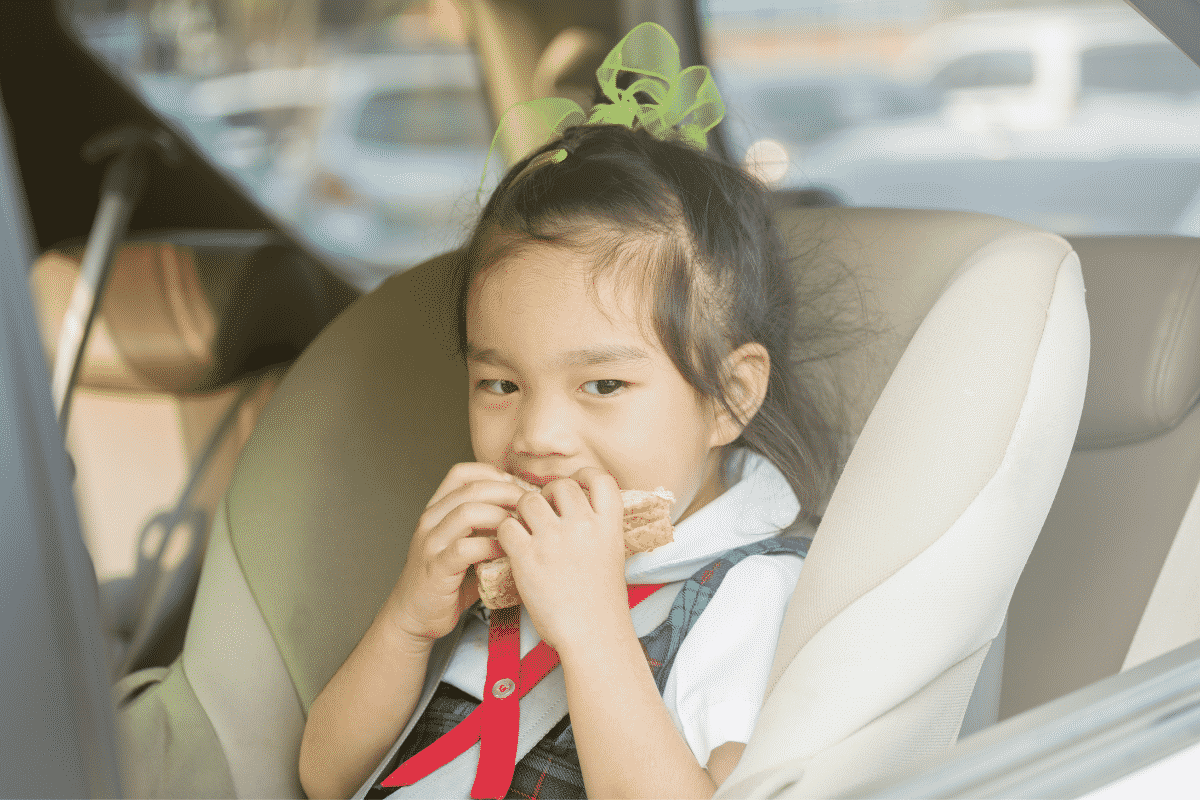
Can you breastfeed baby in the car seat?
Although breastfeeding a baby in the car seat is possible, it’s not safe for mom or the baby. If you’re traveling with a breastfed baby, the easiest option will be for you to pump and bottle feed your baby while you’re traveling. Freshly pumped breast milk can sit at room temperature for up to four hours and in the fridge up to four days. If you pack a cooler in the car, you’ll be able to feed your baby along the way, even on a long road trip.
If your baby has never been bottle-fed, there’s no reason to start just because you’ll be in the car. Next time you stop for a restroom or snack break, take your baby out of the seat and breastfeed them in the back.
Try to stick to your normal feeding schedule instead of skipping a feeding to save time. Intentionally skipping a feeding to avoid stopping can affect your milk supply and it may leave baby feeling hungry as well.
Can you give a baby a bottle in the crib?
Like feeding your baby a bottle in their car seat, giving them a bottle in the crib comes with its own set of risks. Since your baby may not be able to hold their bottle up properly, feeding them in their crib presents a choking hazard, especially if they’re left unsupervised.
Letting a baby drink a bottle while they go to sleep can also increase their risk of tooth decay, since they might fall asleep with the milk or formula still in their mouth. According to Dr. Szugye, “There’s a higher risk for tooth decay if a baby falls asleep with formula, milk or some other drink containing sugar in their mouth.”
Can you take baby out of car seat while driving?
Car seats weren’t designed for safety until the 1960s, and they’ve come a long way since then! No matter who tells you they didn’t use car seats when they were growing up, it’s never safe to take your child out of a car seat while the car is moving. It’s also never safe to let your child ride in the car without a car seat or booster seat, depending on their age.
Can you feed a newborn in a car seat?
Riding in the car for a long time with a newborn is challenging, especially if they’re cluster feeding. Even though newborns tend to eat frequently, it’s always best to stop and take them out of their car seat before feeding them.
Newborns have little control over their head and neck, so feeding them a bottle in the car can quickly become a choking hazard.
When does the 2 hour car seat rule end?
The 2 hour car seat rule states that children shouldn’t be in a car seat for more than 2 hours at a time over a 24 hour period. There isn’t a specific age when it’s okay for babies to spend more time in the car. However, when they start to have more head control, it may be safer for them to be in the car for longer. If you have any questions about your child’s development and what may be safe for them, always consult your pediatrician.

